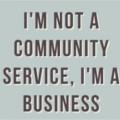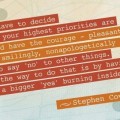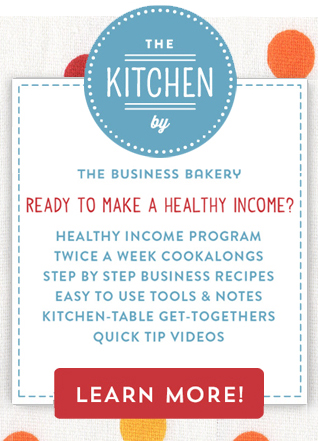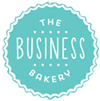#46. Eight pricing lessons from the restaurant industry that apply to your business too
Written by Julia Bickerstaff // July 5, 2012 // Daily Juice // No comments
As you probably know from other pricing blogs and articles I’ve written, I’m adamant that while there are lots of ways to look at
pricing, you’ve got to start by making sure you cover your costs.
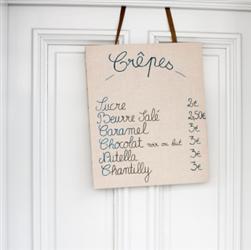
So I was nerdily excited when Alexx Swainston Stuart (founder of Luxury Tastings) passed me this article. It’s a very well written piece all about pricing, costs and the restaurant industry.
The article itself is well worth a read, but it also inspired me to write
the following eight pricing lessons that apply to all businesses.
1. Rules of thumb are good but you can’t beat a proper costs analysis
The article starts by saying “the standard approach restaurant owners take to calculate the price of
their dishes is to take the cost of the protein and multiply it by four.
But…. it’s not as simple as that. And however careful their
number-crunching, none can afford to get it wrong.”
Lots of us use a general rule of thumb to estimate a price based on costs,
but every so often we need to check that our rule of thumb is right! I
know a baker who sold her biscuits at less than cost for a whole year
because she got her rule of thumb wrong.
2. If you can’t get the price you need to cover your costs, look at changing your ingredients
The article goes on to say “At Aubergine…..Ben Willis says food costs him an average 30 per cent.
But he’s also looking to persuade diners of the joy of cheaper cuts –
not only more exciting to cook and eat, but more affordable to put on
the plate. This, he says, is what’s behind most restaurant trends.”
If the cost of your ingredients pushes your price up beyond what customers
will pay, you need to change your recipe, whatever business you are in.
It’s not easy to use a cheaper substitute but if your customers won’t
pay for the top end version, you really don’t have a choice.
3. If you’re feeling price pressure, get creative and cut some things out all together
Ever wondered where tablecloths went and why your favourite restaurant has
started a “no bookings” policy? It’s all about saving costs but it’s
done in a neat way. While ‘‘ the disappearance of tablecloths means savings in storage, washing and ironing” most tables look pretty good without them.
What can you take out of your business without losing the magic?
4. If you hate doing the maths get someone to help you
Ben Willis of Aubergine is honest. ‘I get no excitement over sitting down with a calculator and adding things
up” he says “so I play to my strengths and …..my wife [does] the
numbers”
Most people start their business so they can do their craft (be it food,
art) or follow their passion (teaching, music). Few (I’m probably the
exception here!) like playing around with numbers. So if you don’t like
the maths hire someone to do it for you, that way you’ll be sure to set
your prices above your costs and if it saves you making a pricing
mistake it will be the best money you ever spend!
5. Know the cost of your key items
Ben Willis may not like maths but he’s completely on top of the price of
his key items (these are the ingredients where even a small change in
the cost will have a big impact on profit). As the article says “Willis
recites the prices of key items without hesitation; he clearly knows
the costs intimately. Skate wing is one of the cheapest things he
serves, at $4.99 a kilogram. Also blue mackerel, at $6.50 a kilogram.”
Once you’ve done your cost analysis (see 1 above) and proved your rule of
thumb works, you just need to keep an eye on the cost of your key items.
It shouldn’t be hard to do.
6. Know how many you need to sell
“For any restaurant, of course, no matter what pricing structure you apply
to a dish, the equation only works if you get people through the door.
As Willis says, if he’s half full, he’s losing money; three-quarters
full or more, he’s doing okay.”
It’s the same for any business with sizeable overheads – you need to work
out the minimum number of customers you need a week to cover your costs.
And then you need to make sure you get them!
7. Price bundling
Willis calls it ”menu engineering” – I call it ‘price bundling’ – so he does things like ‘a set price for two ($62) or three ($75) courses and at the weekend, he only offers a three-course menu and there’s no BYO.’
Price bundling can be a useful way of making prices more attractive to both
you and the customer. Let’s say an entree costs $20, a main $35 and
desert $25. If your customer normally just buys an entree and a main she
might be tempted to go for the a set price three course for $65 because
the desert is a ‘cheap’ $10. She feels like she got a bargain and you
get to sell more. (You do need to do your maths first though so that you
ensure the bundled price gives you more profit than just, say, the sum
of an entree and a main.)
8. No-one ever tells you your pricing is right
Most of us get pricing comments at sometime or another and they are not always helpful.
As Willis says ‘‘I have some people who come in here and think $75 is ridiculously
expensive, and people who come in here and think it’s ridiculously
cheap. For some reason nobody comes in and says your pricing’s about
right.’‘
I think it’s useful to listen to pricing comments just in case you come
across a gem. But don’t get hung up about everything that’s said. Your
customer is just one opinion and you’ve got a lot more data – you know
your costs, you know your competition and you also know that you have
plenty of repeat customers who love what you do, at the price that you
charge. So don’t panic and change your prices on the strength of a
single customer comment

Fancy getting a weekly Snack of sweet stuff for your small business? Just pop your details in below.

